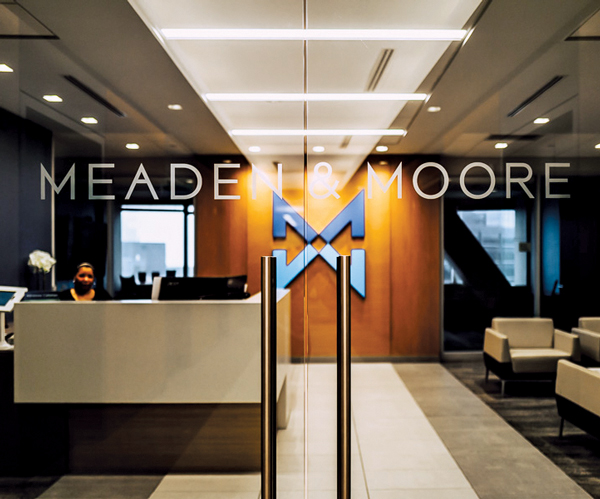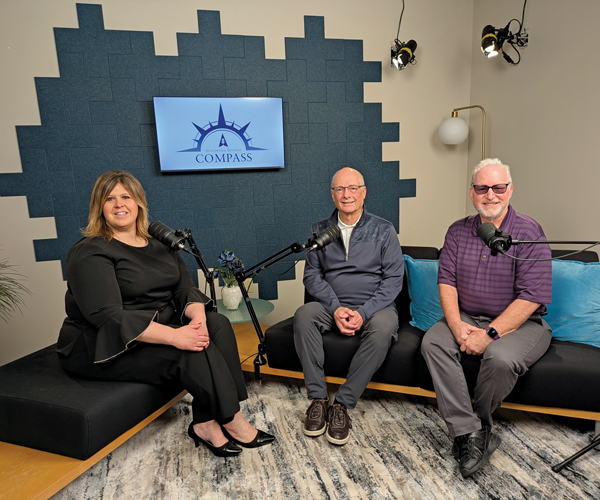Meetings and Events 2020: Discovering the Ideal Destination
by Kristen Hampshire | May. 1, 2020 | 4:00 AM

You can picture it — how guests will arrive, their impression of the space and how they’ll work through the carefully planned schedule. You’ve got a vision for your event or meeting, but there’s a critical step to ensuring that what you expect can be delivered.
The site inspection is an opportunity to experience a venue, determine if it’s a fit and ask all of the nitty-gritty questions necessary to figuring out if what you have in mind will work in the space.
“If planned and executed correctly, a site inspection should be a vivid glimpse for the planner at imagining, first-hand, what his or her attendees will be seeing and doing,” says Mary Tricaso, director of sales, Akron/Summit Convention & Visitors Bureau. “It’s
important for me to orchestrate a site inspection in a way that’s less about just ‘visiting,’ and more about having the planner ‘experience’ as much as he or she can during his or her brief time at each.”
Preparing prior to a site visit will help you make the most of the time touring a venue and learning about its logistics. With thoughtful follow-up, you can move forward knowing the site you selected is, indeed, the one.
Sam Cario at Cleveland Metroparks puts it this way: “Put your client goggles on,” he says, as director of special events and experiences. “Make sure you are inspecting the location with the goals of your client in mind.”
Before: Prep for a Site Visit
You set a date to tour the venue, but think of the walk-through as much more than just a visit. It is truly an inspection that you direct as a planner. Before the site inspection, take time to consider what matters most to attendees. Hone in on what’s most important without getting bogged down by items that are less of a priority for the client. “Don’t stray from that path and be sure to align with your clients’ expectations for a venue,” Cario says.
For example, a common need that can get overlooked during a site inspection is audio/visual, Cario says. “Many event planners don’t ask this question, and then they might have to go back later and rent from an external source, which can drive up the cost,” he says.
Cario also points out the importance of considering the event’s budget. “What can the client accommodate and what can the client not accommodate regarding the cost? Then, we work backward from there,” he says.
Research the venue online prior to scheduling a site visit. “Be sure it’s the right fit. You don’t want to spend time on a site visit and site selection without understanding what the venue is bringing to the table,” says Sally Weinberg Pekarek, director of marketing and events, Sapphire Creek Winery and Gardens.
Consider logistics like parking, access, capacity and room size. How will your guests arrive and enter the venue, and what are their needs during this time? Wayfinding is an important aspect of a venue, especially a larger place, Pekarek points out. Room configuration and privacy can be important to some clients, such as those in the pharmaceutical industry. “They need four walls and a room that is closed off,” Pekarek points out.
Meanwhile, businesses holding meetings might want to ask where attendees can duck out of the room to make a call without interruption. “When we hold executive retreats, we find a place where someone can take that 30-minute call privately,” Pekarek relates.
“Site inspections are an important investment of time and resources for both the event planner and the destination partner venues,” says Dirk Breiding, vice president of sales, Akron/Summit Convention & Visitors Bureau, John S. Knight Center and Greystone. “Although it seems elementary, it’s very important for both parties to establish mutually beneficial goals and objectives as it relates to what the planner wishes to see, and how the destination representative can make the most efficient use of the planner’s time.”
Doing this before the site visit will allow an event planner to ask specific questions and gather information during the site inspection to inform the site selection process.
Tricaso says she works on providing information about the venue to event planners before the inspection, especially if they are visiting from out of town. “I’ve found that this allows the planner to spend more time in the moment, appreciating the venue and its features, seeing it as his or her attendees will, as opposed to focusing on pages and pages of capacities and room specifications,” she says.
During: Gather the Details and Be in the Moment
With the legwork complete, go into the venue visit with your top priorities, such as audio/visual, food and beverage, access and transportation to the site and budget.
“You’ll know a site inspection is going well if the location can provide a concise plan for what it can and cannot provide so the planner can make an educated decision on whether or not the space is the best location for him or her,” Cario says.
During the visit, consider the flow.
How will your event “work” in the venue. How will vendors arrive, where will they park and/or unload equipment and what barriers could prevent this process from happening smoothly? Will vendors need a loading dock, and is there a freight elevator? How big is that elevator? Are there steps and/or double doors?
What changes can be made to a venue and what is set in stone?
“If you know the logistics of the space ahead of time, you can come up with plans to accommodate the architecture you’re dealing with,” says Deborah French Gorman, regional account executive at All Occasions Party Rental. “You can’t knock out walls, so the venue can come up with a plan that works, and vendors can make suggestions.”
On that note, Gorman says inviting vendors to the site inspection is helpful so they can plan how they will enter, set up and take down — along with discussing any modifications that would improve efficiency and minimize extra costs.
“We want to know how many different vendors will come in and how much time we’ll need to create the space,” Gorman says, emphasizing the economic use of time.
After: Follow-up and Finalize
After the site inspection, be prepared to create a detailed floor plan and layout. “The space we have talked about and toured can be put on paper to verify that what you thought will actually work,” Gorman says.
Also find out if the venue has policies or restrictions that need to be followed. “I say this often to my clients — we are guests in the venues’ homes, so we want to make sure that they are on board with everything we’d like to do,” Gorman says.
Follow-up includes a to-do list for the venue. “Make a list of questions that came up during the visit,” Pekarek says. “Review the details and summarize your needs.”
Review the budget again and determine if certain aspects of the event or venue’s offerings need to be altered. Another key item is to review the timeline.
How do you know a site inspection went well?
Consider the communication with the venue’s representative. “Did you feel comfortable? Was the person flexible? Did you feel like you could have an easy relationship with them? What was your first impression?” Pekarek says. Also think about what part of the site inspection was most memorable. “What made you walk away and think, ‘I love it!’?”
No matter what, don’t forget to prioritize the client’s needs and expectations. “You could fall in love with a location because you think it’s the best, but maybe it’s not aligned with your client’s needs,” Pekarek says. “The client should always be the focus.”
Trending
-
1
-
2
-
3
-
4
-
5










